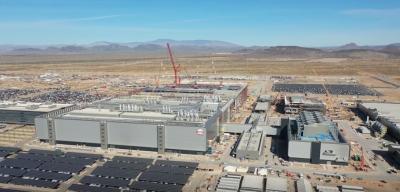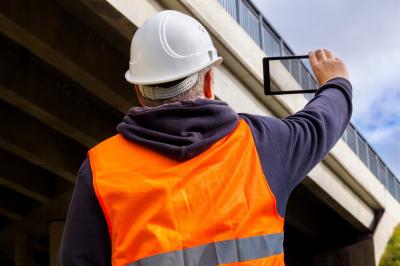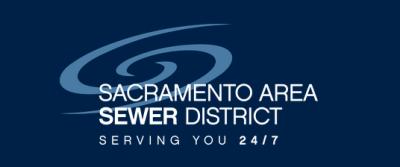The catastrophic tsunami that rose from an earthquake near Sumatra on Dec. 26 and swept toward Thailand and India for 90 minutes with few alerts from warning networks despite feverish seismographs raises some questions.
Is the United States vulnerable to earthquakes and tsunamis, and are we adequately protected?
Geologists and other researchers say that, though most attention has focused on the West Coast, many areas of the United States east of the Mississippi River are also susceptible to serious earthquakes. Tsunamis are less likely, but are possible and quite frightening.
If high-magnitude quakes occur on land or under the sea, or if tsunamis resulting from underwater quakes or earthslides sweep onto a U.S. coast, such events could take many lives in large cities, topple older buildings, cripple powerplants and severely damage infrastructure such as water systems, bridges, tunnels and highways.
Many states and communities have not adopted building codes with full seismic provisions. Efforts are under way to awaken them to the need, and to more adequately protect the nation, both with warning systems and more buildings retro-ºfitted to better withstand the earth’s shaking.
Tsunamis Possible
“Is it possible that a damaging tsunami will hit the east coast of the U.S.?” asked Won-Young Kim, a seismologist at the Lamont-Doherty Earth Observatory in Palisades, NY, which is part of Columbia University’s Earth Institute. “The answer is yes.”
Kim cites the Nov. 18, 1929, Grand Banks Earthquake in the Atlantic Ocean off the Gulf of St. Lawrence, Canada.
“Twenty seven people drowned and much damage was caused by a five-meter-high tsunami on Newfoundland’s Burin Peninsula,” Kim said in an e-mail responding to press queries. “Other earthquakes off the east coast of the U.S. could have generated some low-amplitude tsunamis. These include the magnitude 6 earthquake at Cape Ann, MA, in 1755, the magnitude 5 quake at Newbury, MA, in 1727 and the magnitude 5.2 earthquake off Far Rockaway, NY, on Aug. 10, 1884.”
Kim added, however, “Moderate-sized normal faulting earthquakes along the Mid-Atlantic Ridge usually do not generate tsunamis. However, some moderate-sized earthquakes that occur off the East Coast can be tsunamigenic [generating tsunamis] because these are thrust-faulting, shallow events. For example, two magnitude 6 earthquakes that occurred southwest of Bermuda on March 24, 1978, and Jan. 12, 2002, are noteworthy events.”
Danger in Caribbean
Geologists said tsunamis possibly affecting the East Coast are most possible near the islands in the Caribbean, including Puerto Rico and the U.S. Virgin Islands.
“We have a fairly serious situation there, certainly a risk,” said Diane Noserale, media relations official with the U.S. Geological Survey (USGS) in Reston, VA. “Conditions beneath the sea resemble those which created the tsunamis in the Indian Ocean. Subduction, one tectonic plate being dragged under another, is occurring. If you’re looking over a long time-scale, it’s not a matter of if, but when.”
Noserale said tsunamis would probably be local events, seriously damaging the islands themselves, because they aren’t protected by a broad, relatively shallow continental shelf like that off the East Coast of the United States.
“It’s unlikely that a tsunami generated in the Caribbean would affect the southern coast of the U.S. or the Gulf Coast, including the Florida Panhandle and New Orleans,” she explained, “because they are protected by a shelf and because a lot of the wave energy would break up along the other islands.”
Noserale said that, nevertheless, tsunamis on the eastern coast are “within the realm of possibility.”
“A tsunami hit Virginia 35 million years ago when a large meteorite hit the coastal plain,” she said. “A major earthquake occurred in Lisbon in the 1700s and I understand that did generate a tsunami that reached parts of eastern North America.”
Threaten East Coast?
John Ebel, a professor of geophysics who directs Boston College’s Weston Observatory in Weston, MA, said, “if an earthquake in the Caribbean were big enough, it could affect the Bahamas, the Florida Coast and maybe even farther up the East Coast.
“I don’t know if it [the tsunami] would be moderated by the shelf,” he added. “It could be that the shelf would amplify it in places. I’ve not done the calculations and I’ve not seen that anyone else has done them.
“A 20-ft. tsunami was reported along the coast of India and Sri Lanka on Dec. 26. It was from a magnitude 9 earthquake that was, say, 1,000 miles away. If we had a magnitude 9 earthquake in the Caribbean, then 1,000 miles away a 20- or 30-ft. tsunami would be possible along the East Coast of the U.S.
“If the earthquake were only 8.5, then the tsunami would most likely be much smaller. The largest quake that we know about in the Caribbean has been around 8 or 8.1 so we’re talking about purely conjectural events and we don’t know if they could occur.”
Ebel said another event similar to the Grand Banks earthquake could occur and that tsunamis could send 20-ft.-high waves onto the shores of Boston or New York City.
Carolyn Bell, public affairs officer for the USGS, commented, “Tsunamis in the Caribbean would not be as large as in the Indian Ocean. As you extend the dynamics of a tsunami, you have to have a big, deep ocean above the earthquake to create a big wave. If it’s a shallower ocean, you will create a wave, but it will not be as big. The Gulf of Mexico is shallow.”
Bell said that, in general, “there is not a great threat of tsunamis on the East Coast.
“The reason, of course, is plate tectonics,” she added. “The Mid-Atlantic Ridge is spreading apart while the plates along the West Coast Pacific Rim are overriding each other, creating tension, faults, pressure and volcanoes. We just don’t have the threat of big Atlantic earthquakes.”
She added, however, that “there is a possibility of earthquakes or underground volcanic landslides in the Canary Islands and Iceland or Greenland, which could pose a threat to the East Coast.”
The Bush Administration announced at a Jan. 14 White House news conference that the government will expand its tsunami warning system by deploying 32 new advanced deep-ocean buoys, including some along the East Coast for the first time. The expanded tsunami warning system, part of an international global earth observation system, is to be fully operational by mid-2007.
“The new system will provide the United States with nearly 100 percent detection capability for a U.S. coastal tsunami, allowing response within minutes,” said a White House news release. “The new system will also expand monitoring capabilities throughout the entire Pacific and Caribbean basins, providing tsunami warning for regions bordering half of the world’s oceans.”
The plan commits $37.5 million over the next two years and will be part of an international effort to develop a comprehensive global earth observation system for monitoring, detecting, warning and communicating. The global system will also ultimately include the Indian Ocean.
“There’s no way a warning system can protect against a local tsunami,” Bell said, “but warning systems in Hawaii, for instance, can protect the West Coast and those in Alaska are meant to protect people in Japan and Hawaii.”
West Coast Could Be Hit
Ebel said tsunamis are also a threat to the West Coast.
“The threat from a local earthquake is demonstrated by an earthquake that occurred in January 2000 along the northwest coast,” he said. “There were not many people along the coast at that time, but it generated a strong tsunami that affected the states of Oregon and Washington. That tsunami actually was recorded along the Japanese coast so we think that one was around a magnitude 9 earthquake. That tsunami propagated across the entire Pacific Ocean basin. We know about it primarily from geologic studies. Geologists have gone along the coastal regions and found tsunami deposits like sand, bits of shallow ocean floor and fossils.”
Could that kind of earthquake happen again?
“Yes, it could, along the Oregon and Washington coast, which have the same kind of earthquakes as under Indonesia,” said Ebel. “Obviously, there would also be a tsunami that would affect the entire California coast. An earthquake off California, on the other hand, would not be likely to cause a tsunami of any measurable proportions [because the tectonics are different].”
The last tsunami to cause major damage in the United States was on the West Coast in 1964, when a magnitude 9.3 earthquake shook sections of Alaska. The resultant tsunami sent waves 21 ft. high at Crescent City, CA, damaged port facilities in Los Angeles and killed 120 people in three states.
Ominous Earthquakes
“Earthquakes are a real hazard in the eastern U.S., which in some ways is more vulnerable than the west,” said USGS’s Noserale. “A major earthquake occurs somewhere east of the Mississippi River about every 100 years. Earthquakes have occurred in recent history, damaging buildings not up to building codes which haven’t been retro-fitted to withstand quakes.”
An estimated magnitude 7 earthquake devastated Charleston, SC, in 1886.
David Russ, eastern region executive for geology at the USGS in Reston, VA, believes faults similar to those that caused this quake now run east of the Piedmont zone from New Jersey to South Carolina and pose a “reasonable risk” of another quake along this line (see sidebar).
Russ said the impact of such a quake could be severe because buildings, water/sewer systems and other infrastructure are older and more vulnerable than in the West.
Because the earth’s crust is colder and more brittle in the east, it tends to transmit seismic energy more efficiently, shaking a much larger area.
“A magnitude 7 earthquake between New York City and Boston could damage both cities, along with Hartford [CT], Providence [RI] and other places,” he said.
Several officials said more people could be hurt or killed than in a West Coast quake, but added that many cities in the East as well as the West are making steady progress in retrofitting buildings and protecting structures like bridges.
“Infrastructure is being improved,” Russ said. “Bridges and highways are being built with more seismic resistance. Some old buildings are being replaced with new structures that also have better seismic resistance. It’s still true that the East is vulnerable but it’s less true than 15 years ago and in another 15 years it will be even less true, as long as we continue to add more seismic reinforcement as we continue to improve and update our urban areas here in the Northeast.”
What Are the Odds?
Eugene “Buddy” Schweig, a geologist in USGS’s central region in Memphis, TN, said: “There’s somewhere between 7 percent and 10 percent chance of an earthquake occurring in the next 50 years which will repeat what happened in 1811 and 1812 [near New Madrid, MO]. Though there were no measuring instruments at that time, geologic studies indicate that the really big one at that time was probably between 7.5 and 8 on the Richter Scale. We believe the chance of a magnitude 6 quake in that region in the next 50 years is somewhere between 25 percent and 40 percent.”
Schweig said a repeat of the 1811 and 1812 quakes would definitely affect cities like Memphis, TN, St. Louis, MO, and Little Rock, AR, especially unreinforced masonry buildings that haven’t been retrofitted to resist quakes. It would also damage smaller cities like Cairo, IL.
The quakes, centered near New Madrid, MO, in eastern Missouri near the Tennessee border, generated shock waves that were so strong that observers reported the land distorted into visible rolling waves. The shocks changed the course of the Mississippi River and made church bells ring in Boston, MA, and Washington, DC.
“We have been digging in the Mississippi Valley and have found evidence for a number of prehistoric earthquakes that were probably as large as 1811-12,” Schweig said. “We can see a sequence of quakes about 1450 AD and 900 AD that gives an average of one quake every 500 years. We also have smaller quakes here all the time. The network here records one every couple of days, and people here often feel three or so, at least magnitude 3, a year.
“Most of the bigger, damaging, quakes in the past century in this area have been in southern Illinois and southern Indiana. We also know from prehistoric evidence that they have really big quakes every few thousand years. A [smaller] magnitude 5.1 quake in Southern Illinois in 1968 knocked down my chimney in St. Louis, where I grew up. We call the fault zone the New Madrid Seismic Zone. It extends in zig-zag pattern up as far as Cairo and down to Memphis, which is the closest city.”
Schweig recently visited Charleston, SC, which was devastated by the 1887 quake.
“Walking around downtown Charleston, you can see large bolts holding some historic buildings together because they were rebuilt and strengthened after the quake,” he commented.
Need to Adopt Codes
Schweig said many states have not adopted the International Building Code, which includes seismic provisions for earthquake protection.
“More definitely has to be done,” he said.
“The codes are designed to reflect the unique nature of the threat in each region,” said Jim Wilkinson, executive director of the Central U.S. Earthquake Consortium in Memphis. “Building officials, design engineers and the construction industry need to be educated about seismic requirements in their area, and about the cost impact of the codes.
”We haven’t had enough recent quakes in the central and eastern part of the country to cause the industry and the public to want to achieve a higher level in seismic requirements. It boils down to educating the public and getting cost-effective approaches.”
Congress authorized an Advanced National Seismic System several years ago. Though it wasn’t fully funded, this network of thousands of advanced seismic instruments is being installed, with some already placed in buildings of earthquake-prone cities like Memphis. The instruments tell how a building is shaking. They also generate a computer-generated map which shows which area of the city or town would be most affected if a quake occurs.
“We’re working with planners and civil engineers in cities like Memphis, and with the Central U.S. Earthquake Consortium, so communities will utilize our information to upgrade their building codes,” said USGS’s Bell.
The USGS is also enhancing the delivery of seismic monitoring information.
For more information, visit www.usgs.gov.
Today's top stories















